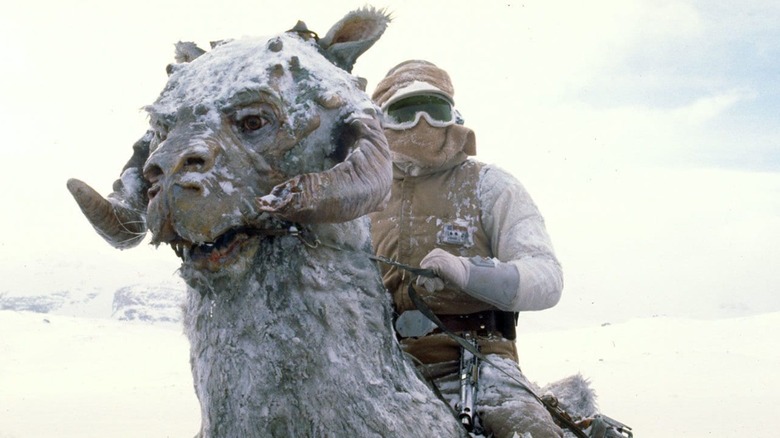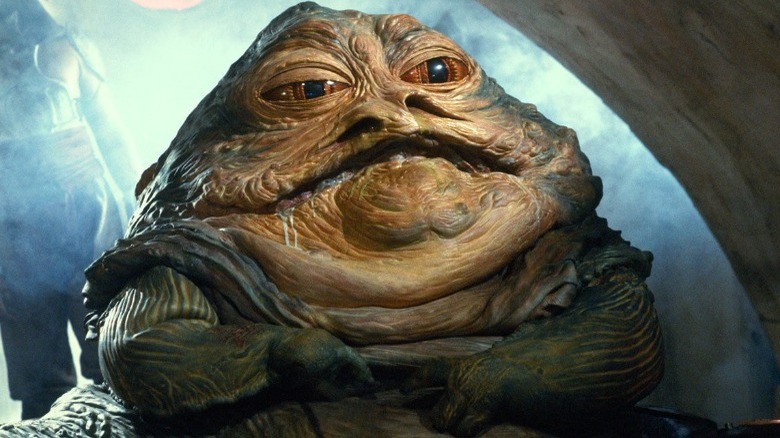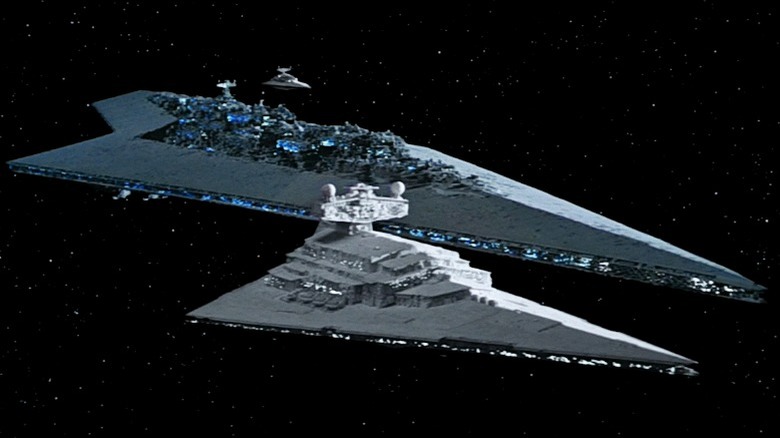Why Visual Effects Legend Dennis Muren Prefers Star Wars Practical Creatures
It's difficult to overstate the immense impact "Star Wars" made in Hollywood. Before it exploded into a massive, decades-sprawling, multi-billion dollar franchise, George Lucas' original entry, re-named as "Star Wars: Episode IV – A New Hope," was a strange and ambitious attempt at bringing the campy space operas the director grew up watching to a modern audience. In a landmark moment, the film introduced a new style of a modern blockbuster and encouraged productions to shift to bigger special effects-heavy adventures — forever changing the theatrical landscape. It wasn't just George Lucas that participated in this revolution, though. His creative team consisted of special effects artists that brought spaceship dogfights and alien worlds to life, a task that was essential to the success of the film and eventual series.
That's why VFX master Dennis Muren, who pioneered both practical and digital effects, has such an enduring legacy within the annals of film history. Muren, who started out photographing models and miniatures and is now a creative director at Lucas' powerhouse effects company Industrial Light & Magic, became the first VFX artist to receive a star on the Hollywood Walk of Fame. Besides supervising the original "Star Wars" trilogy, he has also worked alongside blockbuster legends like Steven Spielberg and James Cameron, revolutionizing visual effects, even more, when he worked in the digital realm during the groundbreaking "Jurassic Park" and "Terminator 2: Judgment Day."
Flawed Masterpieces
Dennis Muren has extensive experience in both practical and digital effects, helping to usher in both the golden age of practical effects during the eighties as well as the modern era of CGI. His creative reach gives him perspective on the strengths and weaknesses of both techniques, and while he has lauded the possibilities that CG provides, he has on occasion lamented the downfall of more hands-on work. Speaking specifically about the "Star Wars" creature effects in an interview with StarWars.com, Muren stated that he prefers to see the tangibility of whatever is on the screen, even if it highlights design defects. Indeed, there's a certain beauty to the cracks and flaws of practical effects that make them seem more realistic, as Muren explains that it's as if "the limitations were built into" the designs.
Using Jabba the Hutt in "Return of the Jedi" as an example, Muren explained that the constraints of the model turned out to be part of what makes the visual aspects of the character organic and believable. Jabba was too big to move and lug around, but he never needed to because he's a giant slug that doesn't look like he would be very mobile, anyway. To get a better sense of what Muren is saying here, compare the old Jabba to the more recent CG Jabba that George Lucas edited into the special edition release of "Star Wars: Episode IV – A New Hope," who slithers around awkwardly and artificially.
Reaching Out and Touching
Dennis Muren summed up his feelings on the flawed perfection of practical effects in a way that may sound familiar to those who find digital effects to look too obviously virtual. Here's what he had to say to StarWars.com:
"I actually, in some ways, prefer a practical thing that doesn't look right. I can't relate to a digital image [that looks fake]. I don't feel like I can touch it. If it's done right, it's great. I totally love it. It's just that there's so much work that the industry has had to do lately and the budgets have been cut so much, there's not enough time to refine it. I don't think that's very good. I still like seeing something and thinking, 'Hey, they tried.' I feel that if I reached out, I could touch that thing."
The interview dates back to 2013, when digital effects were well into their domination of Hollywood blockbusters. Still, it's been almost a decade since, and digital VFX technology has continued to evolve. In 2019, Muren himself replaced his own ship models in "The Empire Strikes Back" with CGI as a way to demonstrate how advanced the medium has gotten. On the other hand, the recent controversies about the intensely rushed working conditions of Marvel's special effects teams have proven Muren's point about how artists simply don't have enough time to perfect their digital work. If anything, Muren's ventures on both sides of the effects world have shown that deciding what technique to use takes impressive skill and careful consideration.


